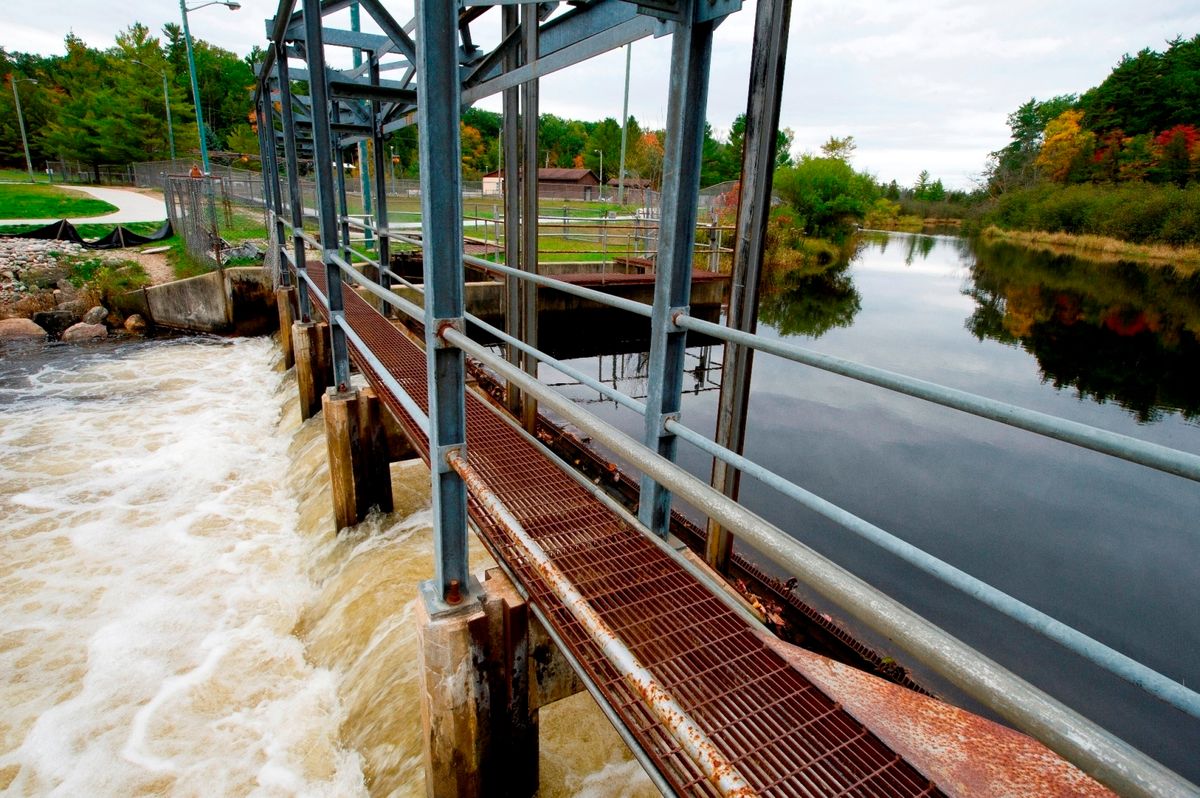Secrets Of Michigan’s Ancient Fish Weirs

Have you ever wondered about the ancient fishing techniques used by Native Americans in Michigan? One fascinating method involves Michigan's ancient fish weirs. These structures, made from stones and wooden stakes, were used to trap fish in rivers and streams. Imagine the ingenuity required to build something so effective without modern tools! These weirs not only provided food but also played a role in community gatherings and cultural traditions. Today, remnants of these ancient fish traps can still be found, offering a glimpse into the past. Let's dive into the history and significance of these incredible structures.
Discovering Michigan's Ancient Fish Weirs
Michigan, known for its stunning lakes and rich history, hides a fascinating secret beneath its waters: ancient fish weirs. These ingenious structures, built by Native Americans, were used to trap fish, making them an essential part of survival and culture. Let's dive into some of the most intriguing spots where you can find these ancient marvels.
1. Ludington State Park
Ludington State Park, located between Hamlin Lake and Lake Michigan, offers more than just beautiful beaches and hiking trails. Beneath the waters of Hamlin Lake, remnants of ancient fish weirs can be found. These structures, made from stones and wooden stakes, tell a story of the resourcefulness of early inhabitants.
2. Sleeping Bear Dunes National Lakeshore
Sleeping Bear Dunes National Lakeshore, famous for its towering sand dunes, also holds secrets beneath its waters. In the Platte River, researchers have discovered remnants of fish weirs used by Native Americans. Exploring this area provides a unique glimpse into the past while enjoying the natural beauty of the dunes.
3. Manitou Islands
The Manitou Islands, part of the Sleeping Bear Dunes National Lakeshore, are not just a paradise for hikers and campers. These islands were once home to Native American tribes who built fish weirs to sustain their communities. The underwater remains of these structures can still be found, offering a fascinating look into ancient fishing techniques.
4. Grand Traverse Bay
Grand Traverse Bay, known for its crystal-clear waters and vibrant marine life, also hides ancient fish weirs. These structures, found in the bay's shallow waters, were used by Native Americans to trap fish as they migrated. Exploring this area with a snorkel or kayak can reveal these hidden historical treasures.
5. Saginaw Bay
Saginaw Bay, part of Lake Huron, is another hotspot for ancient fish weirs. The bay's shallow waters and abundant fish made it an ideal location for these structures. Today, divers and researchers continue to uncover remnants of these weirs, providing valuable insights into the lives of early inhabitants.
6. Mackinac Island
Mackinac Island, a popular tourist destination, also has a hidden historical side. Beneath the waters surrounding the island, ancient fish weirs can be found. These structures, built by Native Americans, were essential for trapping fish in the Straits of Mackinac. Exploring the island's waters can reveal these fascinating remnants of the past.
7. Cheboygan River
The Cheboygan River, flowing into Lake Huron, is another location where ancient fish weirs have been discovered. These structures, made from stones and wooden stakes, were used by Native Americans to trap fish as they migrated upstream. The river's clear waters make it an excellent spot for exploring these historical sites.
8. Au Sable River
The Au Sable River, known for its scenic beauty and excellent fishing, also holds ancient secrets. Researchers have found remnants of fish weirs used by Native Americans along the river. These structures provide a glimpse into the resourcefulness of early inhabitants and their deep connection to the river.
9. Tahquamenon River
The Tahquamenon River, famous for its stunning waterfalls, also hides ancient fish weirs beneath its waters. These structures, built by Native Americans, were used to trap fish as they migrated upstream. Exploring the river's waters can reveal these fascinating historical remnants.
10. St. Mary's River
St. Mary's River, connecting Lake Superior and Lake Huron, is another location where ancient fish weirs have been discovered. These structures, used by Native Americans to trap fish, provide valuable insights into the lives of early inhabitants. The river's clear waters make it an excellent spot for exploring these historical sites.
Michigan's Ancient Fish Weirs: A Glimpse into History
Michigan's ancient fish weirs offer a fascinating look into the past. These structures, built by Indigenous peoples, showcase their ingenuity and deep connection to nature. Visiting these sites provides a unique opportunity to learn about traditional fishing methods and the cultural significance of these weirs.
Exploring these historical sites can be an educational and enriching experience. It helps us appreciate the resourcefulness of early inhabitants and their sustainable practices. Whether you're a history buff or simply curious, Michigan's fish weirs are worth a visit.
Next time you're in Michigan, consider adding these ancient fish weirs to your itinerary. They are not just remnants of the past but also a testament to human innovation and respect for the environment. Discovering these sites can deepen your understanding of history and the natural world.

